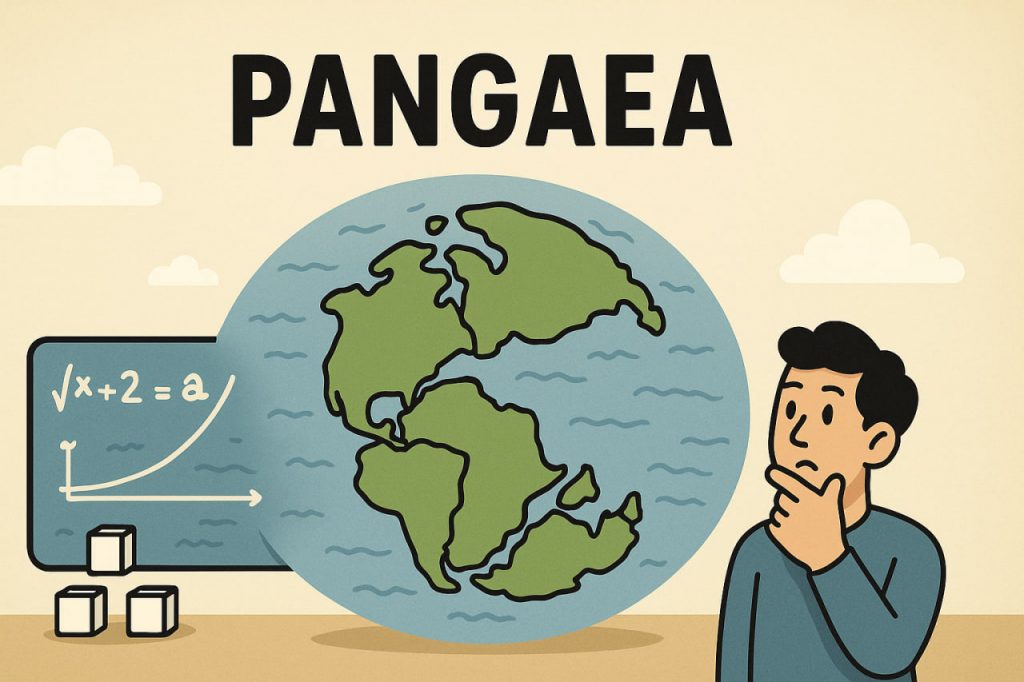Pangaea was a massive supercontinent that existed about 335 to 175 million years ago during the late Paleozoic and early Mesozoic eras. It brought together almost all of Earth’s landmasses into one giant formation. Surrounded by a vast ocean called Panthalassa, Pangaea represented one of the most dramatic reorganizations of Earth’s surface. Its existence played a key role in shaping global climate, ecosystems, and the evolution of life.
Formation of Pangaea
Pangaea was not created suddenly but through the slow process of plate tectonics. Over hundreds of millions of years, smaller continents drifted together and collided. The movement of Earth’s lithospheric plates caused mountain-building events, such as the formation of the Appalachians in North America and the Ural Mountains in Russia. These collisions illustrate how continents are never static but constantly reshaped by geological forces.
Life on Pangaea
The supercontinent provided unique conditions for the development of life. Large interior regions of Pangaea were far from the ocean, creating vast deserts with extreme climates. Coastal areas, on the other hand, supported lush forests and diverse ecosystems. During this period, reptiles, early dinosaurs, and the first mammals appeared. The uniform landmass also allowed species to migrate more easily across regions, influencing evolutionary patterns.
Breakup of Pangaea
Around 175 million years ago, Pangaea began to break apart due to tectonic activity. The separation created the Atlantic Ocean and eventually gave rise to the continents we know today. This breakup reshaped global biodiversity, as species became isolated and adapted to their new environments. The event also influenced ocean circulation and climate, contributing to major evolutionary changes during the Mesozoic era.
Evidence for Pangaea
Scientists support the theory of Pangaea with multiple lines of evidence. Identical fossils of plants and animals, such as the reptile Mesosaurus, have been found on continents now separated by oceans. Geological formations, like matching mountain ranges in Africa and South America, also align across continents. Advances in paleomagnetism and seafloor spreading have further confirmed the concept of continental drift proposed by Alfred Wegener in the early 20th century.
Significance of Pangaea
Studying Pangaea helps scientists understand the dynamics of Earth’s crust and the history of life. The supercontinent demonstrates how continental drift shapes climate, ecosystems, and species evolution. It also provides insight into the future, as some geologists predict that Earth’s continents may merge again into a new supercontinent in hundreds of millions of years.
Conclusion
Pangaea was one of the most remarkable geological structures in Earth’s history. Its formation, life conditions, and eventual breakup reshaped the planet’s climate and biodiversity. By studying Pangaea, scientists gain valuable knowledge about Earth’s past and clues about its geological future. The story of Pangaea shows that our planet is dynamic, ever-changing, and deeply interconnected.
Glossary
- Pangaea – a supercontinent that existed between 335 and 175 million years ago.
- Panthalassa – the vast ocean surrounding Pangaea.
- Plate tectonics – theory explaining the movement of Earth’s lithospheric plates.
- Continental drift – gradual movement of continents over geological time.
- Mesosaurus – an extinct reptile whose fossils support the theory of Pangaea.
- Paleomagnetism – study of Earth’s magnetic field recorded in rocks.


